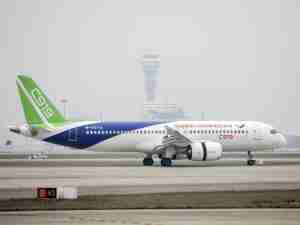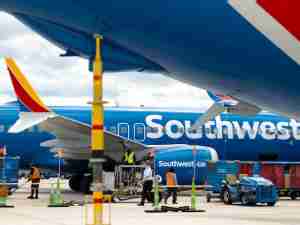Tiffany & Co.’s U.S. sales to Chinese tourists fell by more than 25% last quarter, a trend that’s worsening as a trade war escalates between the two countries.
The jeweler first started seeing cracks in tourist spending a year ago, and it has further deteriorated over the past three quarters. Company executives said on a conference call that the overall sales drop to tourists visiting the U.S. steepened to 25% last quarter from a year earlier, and the decline was even deeper among travelers from China, without giving a specific number.
The trend represents a threat for U.S. luxury companies, which depend on deep-pocketed foreigners for a not-insignificant part of their sales. The problem will likely be exacerbated by a travel warning Tuesday, in which China’s Ministry of Culture and Tourism dissuaded citizens from visiting the U.S. because of “frequent” shootings, robbery and theft. State-run television network China Central Television said U.S. law enforcement agencies had “repeatedly harassed” Chinese travelers.
“Of course we are not happy when there are recommendations of not traveling,” Chief Executive Officer Alessandro Bogliolo said in an interview Tuesday. “But of course this is outside our control. We’re focusing on what’s under our control.”
The company’s internal estimates show that foreign tourists account for a low-double-digit percentage of Tiffany’s U.S. sales. Revenue from the Americas represented about 40% of the company’s total of $1 billion in the first quarter.
It’s not just Tiffany that’s feeling the impact. Jeffrey Goh, CEO of the Star Alliance group of airlines, said this week that his association’s members have seen a decline in U.S.-bound travelers from China. Star Alliance includes carriers such as Air China and United Continental Holdings Inc. PVH Corp., the owner of Calvin Klein and Tommy Hilfiger apparel, reported last month that U.S.-China tensions are causing anxiety among consumers.
U.S. data show Chinese tourism has been falling. Three million Chinese tourists traveled to the U.S. in 2018, down from 3.2 million the previous year, according to the National Travel and Tourism Office, which collects data from U.S. customs forms. But Chinese citizens still spent more while stateside: $36.4 billion in 2018—up from $35.3 billion the year before—making them the biggest spenders of all international tourists.
For Tiffany, the other side of the coin is that the Chinese government is urging its citizens to increase domestic consumption, which helped push the jewelry maker’s sales in mainland China up by double digits in the first quarter.
Currency trends are also playing a role. When exchange rates were favorable, Chinese vacationers would often make shopping lists of what they wanted to buy from luxury brands before traveling abroad, Bogliolo said. That stopped as the U.S. dollar strengthened, so they shifted to buying more of those goods domestically.
Sales to wealthy travelers tend to skew toward Tiffany’s New York flagship location, West Coast stores and boutiques in the Northeast that are close to major universities.
Tiffany shares rose 2.6% to $92.51 on Tuesday, extending the stock’s year-to-date rise to 15%.











